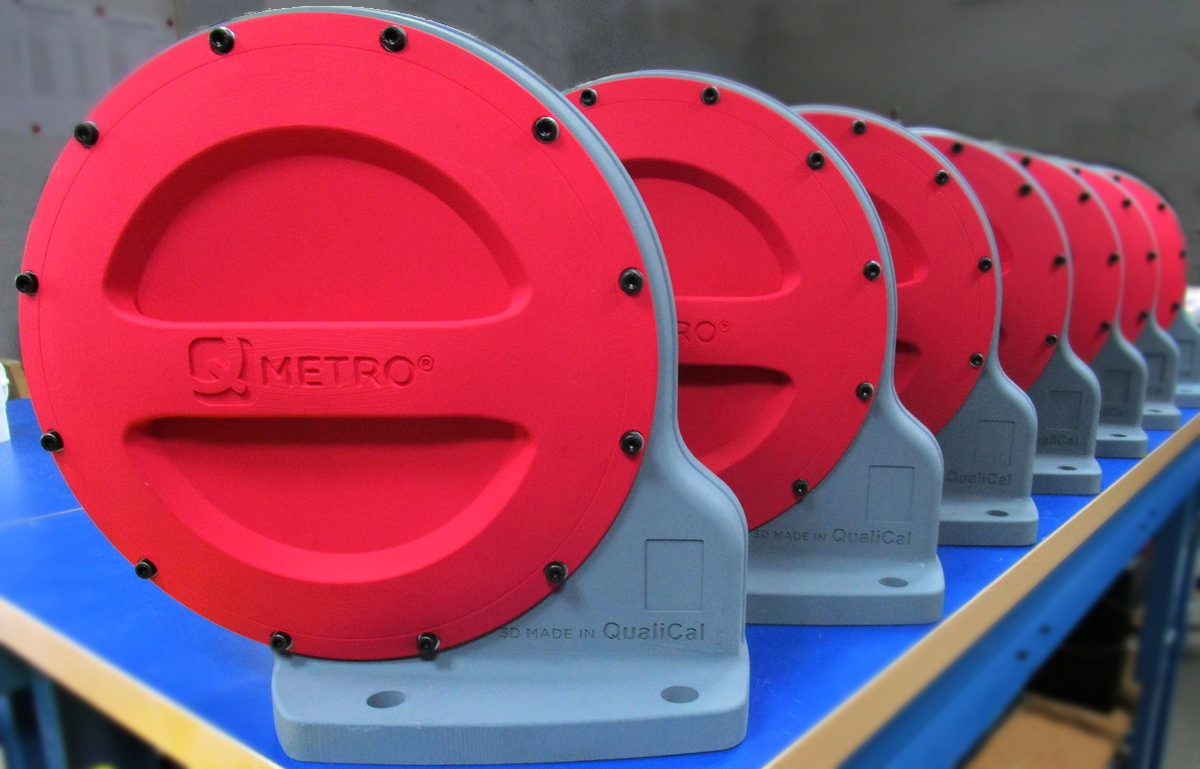Italian engineering company QualiCal saw an opportunity for innovation in lime production, and asked — could 3D printing help eliminate the single biggest cause of production downtime? It could and it has. Partnering with us, QualiCal developed a shaft level indicator that offers the potential for increased revenue of up to €1,400,000.
Lime is one of the most important materials to modern life. Used in applications ranging from construction to cosmetics, it is estimated that the average EU citizen consumes around 150 grams of lime/day through products containing, or manufactured using, the age-old substance. Lime production is big business but also highly competitive, making the need to increase profitability, improve product quality and reduce operational inefficiency, essential.
Coupled with an industry-wide drive to utilize the benefits of digitization and realize Industry 4.0 ambitions — Italian engineering company QualiCal saw these challenges as an opportunity to innovate. They asked the question — could 3D printing help eliminate the single biggest cause of production downtime? It could and it has. Partnering with Materialise, QualiCal has developed METRO — a 3D-printed shaft level indicator that offers its users significant savings, and the potential for increased revenue, of up to €1,400,000.
‘Designing Out’ Downtime
QualiCal has been innovating in the Lime production arena for 20 years — championing processes and capabilities enhanced though digitization. This commitment to evolving techniques and technologies prompted the business to explore ways to improve a key area of production – limestone level indication.
Accurately measuring the limestone levels inside kilns during the lime production process is essential as it dictates operational actions required to optimize final product quality. Traditionally, a shaft level indicator (SLI) fulfils this role: a drum powered by an electronic motor and hydraulics lays down a counterweight to maintain physical and continuous contact with the material bed in order to feedback constant and accurate limestone level measurements.
Though universally adopted, the solution is far from ideal. The SLI’s complex mechanical design (many moving parts) often results in ‘friction failure’ or data inaccuracy. The unit is also susceptible to powder clogging from the dusty kiln environment. Cumulatively the issues make SLIs the primary cause of unplanned plant downtime, costing the average facility over €20,000 a year in production losses. So what if downtime could be ‘designed out’?
Francesco Cella, Technical Director at QualiCal, says: “The shaft level indicator is the heart of the lime production process – what was clear to us was that the heart could beat faster and stronger. Introducing a new brushless motor, continuous torque control and simplifying mechanical parts — eliminating the need for extra hydraulics – we developed the first METRO prototype. Having field-tested the unit in a HeidelbergCement Synthesis kiln we knew the concept was sound.
“But we also knew we were still being shackled by the confines of tradition. Our next step was to look at how performance could be improved through advanced manufacturing techniques, in particular at how structures and materials possible only through 3D printing could take METRO to the next level. Alessio and his team at Materialise, took up that challenge. Within just one month they had re-imagined METRO, optimizing its geometry and composition to create a smaller, lighter solution.”
n
Using honeycomb structures and performance plastics – fiber/aluminum reinforced nylon – the team were able to reduce instrument size by half (drum diameter from 500mm to 250mm), distributing strength throughout the unit to improve resistance and durability. Front-to-back screw channels, impossible to create using traditional milling techniques, removed any need for connection with the inner environment delivering excellent resistance to pressure from processed air.
Alessio Esposti, Account Manager for Materialise Italy, explains: “When QualiCal came to us with the metal prototype, we knew that 3D printing design techniques could help optimize and reduce individual components to further minimize points of physical failure and operational malfunction, and quickly came up with the design concept to take forward for development.
“The performance plastics selected allow operation at extremely high kiln temperatures and also avoid the oxidization issues which affect steel-constructed SLIs. The evolved geometry also built on the efficiencies identified by QualiCal by reducing opportunities for dust ingress and pressure build-up. As a result, the 3D printed METRO is virtually maintenance free", Alessio Esposti, Account Manager, Materialise Italy
Co-creating Cost Efficiency
Being ‘maintenance free’ is a claim borne out by reality. During a six month pilot deployment in an active kiln, the new look METRO required no maintenance and, when inspected, showed no signs of needing any in the near future. Gear boxes no longer need lubricating. Parts no longer wear out from friction. Overheating no longer occurs from mechanical wear and tear. All for the same unit cost as producing the old, traditionally manufactured steel SLI instrument. Reducing mechanical parts and optimizing design has also improved sensor accuracy, meeting QualiCal’s commitment to enhanced digital feedback for improved production in line with Industrial Internet of Things (IIoT) principles.
As QualiCal CEO Carlo Cella explains, the cost-efficiencies in play are substantial. “3D Printing is often seen as the innovative but expensive option. That simply isn’t the case here. With a production cost equal to that of traditional shaft level indicators, the savings generated by reduced unplanned downtime and maintenance are exactly that, real savings.”
“Our calculations show that the solution could save lime producers around 120 €/tpd every year – extrapolated for the lifetime of the equipment we think that this simple change could increase revenue for these businesses by some €1,400,000. Add to that the future benefits of being able to print and even adapt spare parts on site, avoiding the need to rely on holding stock or long-lead-time supplies, and the advantages really stack up", Carlo Cella, QualiCal CEO
“Our aim as a modern industrial business is to bring the industrial internet to life. With METRO we have, and I certainly see advanced manufacturing as the next chapter in the industrial revolution.”
